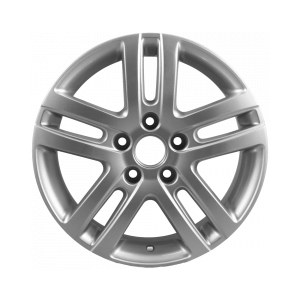Custom O Rings for Your Unique Sealing Solutions and Industrial Applications
Understanding Custom O-Rings An Essential Component for Various Applications
In today's industry, the use of seals is fundamental to ensuring the integrity and efficiency of various systems. Among the different types of seals, O-rings stand out as one of the most commonly used components. Their design, which consists of a circular cross-section, allows them to create seals when compressed between two or more parts. Custom O-rings take this concept a step further by being manufactured to meet specific requirements, making them a vital component for diverse applications across multiple sectors.
What are Custom O-Rings?
Custom O-rings are specially designed seals tailored to fit unique dimensions, materials, and specifications dictated by the needs of a specific project or application. Unlike standard O-rings, which are mass-produced in common sizes and materials, custom O-rings are manufactured based on detailed requirements provided by the client. This customization can include variations in diameter, thickness, material composition, and even surface finish.
Materials Used for Custom O-Rings
One of the primary considerations when designing custom O-rings is the choice of material. The material affects not only the performance of the seal but also its longevity and resistance to various environmental factors. Common materials used for O-rings include
1. Nitrile Rubber (Buna-N) This versatile material is widely used due to its excellent resistance to petroleum-based oils and fuels. It is suitable for both static and dynamic applications.
2. Fluoroelastomer (Viton) Known for its high-temperature and chemical resistance, Viton O-rings are ideal for harsh environments, making them a popular choice in the chemical processing and aerospace industries.
3. Silicone With excellent elasticity and temperature resistance, silicone O-rings are often used in food processing and medical applications.
4. Polyurethane This material boasts exceptional wear resistance and is often utilized in applications that require durability and resilience.
5. EPDM Ethylene Propylene Diene Monomer is favored for its outstanding weatherability and resistance to steam, making it suitable for outdoor applications.
Benefits of Custom O-Rings
The adaptation of O-rings into custom designs holds several advantages
custom o rings

1. Perfect Fit Custom O-rings ensure that seals fit perfectly within their designated grooves, reducing the chances of leaks or failures in pressure applications.
2. Enhanced Performance By selecting the right material and dimensions, these O-rings can enhance the overall performance of the machinery or equipment they are integrated into.
3. Cost Efficiency Although custom O-rings may have a higher upfront cost compared to standard O-rings, the improved efficiency and reliability can lead to decreased maintenance costs and longer equipment lifespan, ultimately saving money in repairs and replacements.
4. Versatility Custom O-rings can be employed across various applications, from automotive and aerospace to medical and food processing industries. Their adaptability makes them invaluable in many contexts.
Applications of Custom O-Rings
Custom O-rings are used in numerous settings
- Automotive Industry In vehicles, O-rings help seal fuel and hydraulic systems, ensuring leaks are prevented and efficiency is maintained.
- Aerospace Here, they are often employed in fuel systems, pneumatic systems, and hydraulic applications, where high levels of reliability and performance are crucial.
- Industrial Applications Machinery and equipment that require fluid sealing and pressure management extensively utilize custom O-rings.
- Medical Devices Sterile environments necessitate specific materials and designs to ensure safety and compliance with health standards.
- Food Processing Custom O-rings made from food-safe materials are essential in applications where hygiene and safety are priorities.
Conclusion
Custom O-rings play an indispensable role in a cross-section of industries, providing tailored sealing solutions that meet specific operational requirements. As technology and industry needs evolve, these O-rings continue to adapt, ensuring that they remain a crucial component in the design and manufacturing processes. By understanding their benefits, materials, and applications, engineers and designers can harness the power of custom O-rings to enhance system reliability, efficiency, and performance. Whether for automotive engines, aerospace components, or medical devices, the application of custom O-rings is a testament to the power of customization in modern engineering.
-
The Ultimate Guide to Boat Propeller Bearings and Trailer Wheel Bearings
News Jul.31,2025
-
The Essential Guide to Marine Bearings and Boat Trailer Wheel Bearings
News Jul.31,2025
-
The Complete Guide to Heavy Duty Seals: Protecting Doors and Spaces Efficiently
News Jul.31,2025
-
Essential Guide to Marine Shaft Bearings and Boat Trailer Axle Bearings
News Jul.31,2025
-
Comprehensive Guide to Marine and Trailer Bearings for Safe Boating and Transport
News Jul.31,2025
-
Comprehensive Guide to Automotive Oil Seals: Protecting Your Engine and Shafts
News Jul.31,2025
-
Understanding Automotive Oil Seals: Essential Components for Engine and Shaft Protection
News Jul.30,2025
Products categories















